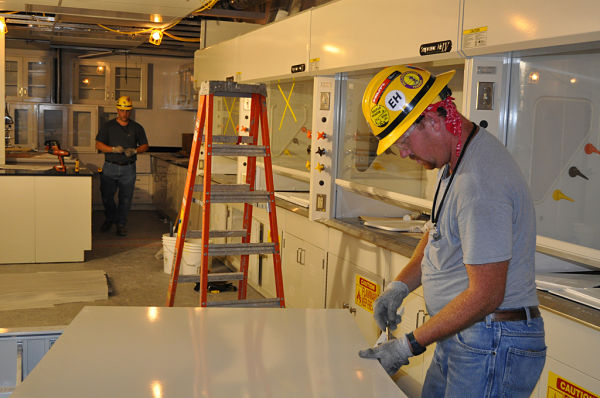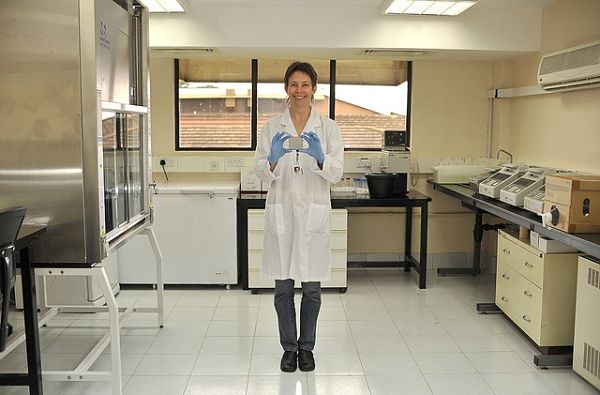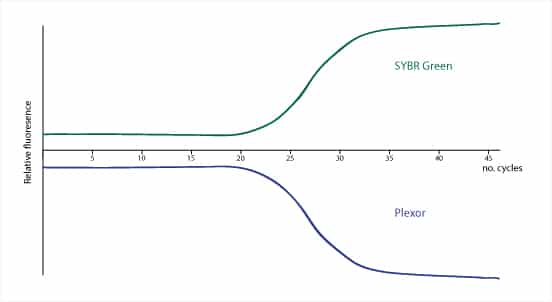What is PCR? The Beginner’s Guide
If you need to copy, sequence, or quantify DNA, you need to know about PCR. Read our guide to the PCR process, and discover tips to help you avoid the most common PCR pitfalls.
Join Us
Sign up for our feature-packed newsletter today to ensure you get the latest expert help and advice to level up your lab work.

If you need to copy, sequence, or quantify DNA, you need to know about PCR. Read our guide to the PCR process, and discover tips to help you avoid the most common PCR pitfalls.

New to qPCR? Here’s a quick summary of one of the two most common analysis methods – double delta Ct analysis.

Every man, woman, and dog is doing quantitative real time reverse transcriptase PCR (qRT-rtPCR) these days. It’s a great method to measure your favorite transcript’s expression levels. One of the big plusses (like the Swiss flag!) of quantitative PCR in general is its high sensitivity. In principle, it can detect and quantify one molecule of…

Who amongst us hasn’t had the need for oligonucleotides in an experiment? It is a cornerstone in many procedures and techniques. Depending on the goal, it can be very hard to design just the right oligo for your experiment. Oligos must have the right length; the right amount of C-G, T-A; they can’t form secondary…

PCR was actually one of the first lab techniques I learned as an undergrad. Despite being sometimes labeled as a pretty basic lab skill, PCR doesn’t always work as expected. This “fickle” success is due to small details or hidden hazards within the PCR workflow that can cause your seemingly uncomplicated experiment to fail. This…

Droplet digital PCR? It’s easy. Because we’re here to guide you through it. We recently introduced you to the principles of digital PCR technology and how it differs from qPCR. In a nutshell, digital PCR is an end-point PCR technology that divides a single PCR into a large number of partitions, and then perform PCR…

There are many different methods and protocols on making your PCR run more efficiently. I recently came across an interesting PCR method called “nanoparticle” PCR. This method seems to attract a lot of attention, because it enhances a PCR by a few orders of magnitude. More interestingly, while the enhancement effect has been reported in a…

DNA shuffling uses PCR technology in a very creative way. It allows you modify your protein to make a new protein you want. You can evolve proteins in microcentrifuge tubes on your very own lab bench. Isn’t that fantastic? DNA shuffling is also a very powerful technique for directed molecular evolution. W. Stemmer first used…

Kary Mullis invented polymerase chain reaction (PCR) in 1985 creating a revolution in molecular biology techniques. But it hasn’t stopped there. PCR has greatly evolved over the years. Today, we stand at a point, where we can clone micro RNAs (miRNAs) in real time! Due to miRNA size (about 18-21 nucleotides long) and varied expression levels,…

In the 30 odd years since its invention, the polymerase chain reaction (PCR) has become the bread and butter technique of molecular biologists. The secret to its indispensability lies in its simplicity and versatility. Numerous variants of the technique have been developed; one of these, real-time PCR, has become the method of choice for quantitative…

There’s piloting a brand new technique for the first time. Then, there’s jumping through hoops trying to get an established lab technique to work. The former, in contrast to the latter, is expected to be fraught with hardships. Yet troubleshooting an old lab technique that isn’t working anymore, is frustrating at a whole new level….

You’ve tried all the usual stuff, and checked the primer sequences twice, but still can’t get that PCR fragment amplified. It’s time to enter the strange world of PCR additives. Over the years a variety of additives have been shown to enhance PCR reactions in certain situations. Here is a summary of some of the…

Quantitative PCR (qPCR) uses fluorescent dyes or probes to visualize the amplification of specific DNA sequences as it happens (i.e. in real time). The dyes or probes fluoresce when they bind to newly amplified DNA, and the amount of fluorescence emitted is proportional to the amount of DNA (or mRNA) present in the original sample. By detecting newly synthesized DNA…

Hope you had a heavy breakfast, because the first qPCR is going to take time. Did you remember to fill your coffee cup? There are a lot of intricacies in qPCR that will need your neural networks to be brisk. How qPCR differs from traditional PCR Unlike traditional PCR, qPCR measures the amplification of DNA…
Viability PCR (vPCR) is a big step forward in PCR technology. Through the use of a simple pre-treatment of the sample(s) of interest using specific intercalating reagents, it is possible to neutralize the DNA of dead cells. As a result, only DNA from live cells will be amplified by PCR. Through the vPCR, it’s possible to…

The more experienced hands in your lab know that molecular biology is rarely just a journey from A to B. As a result, I’ve constructed this short workflow as an introduction to genomic molecular techniques.

Alu sequences are repetitive DNA sequences that are widely dispersed within the human genome. These “junk DNAs” are not as useless as one might think. An interesting method to use them is to quantify the number of integrated Human Immunodeficiency Virus (HIV) genome copies using Alu-PCR.

I think we all have been through those my-PCR-product-didn’t-get-amplified days. Sometimes, playing around a bit more with the PCR conditions brings luck, or sometimes it doesn’t work at all. These days we have access to many different types of DNA polymerases, ultrapure and buffered nucleoside triphosphates, and other necessary starting materials in convenient concentrations; but…

Every protocol for single cell PCR can be broken down into two steps. In the first step, the cells are isolated by micromanipulation, laser capture microdissection, flow cytometry, or by direct micropipetting. Next, the genetic material is processed by PCR to amplify your sequence of interest. Here, we’ll go through the different options for isolating…

As researchers, we are constantly on the lookout for new and improved ways to analyze, detect and quantify our favorite protein or gene. Luckily, we don’t always need to reinvent the wheel! PCR-ELISA is a good example of where two commonly used techniques have been merged together to create a very powerful analytical tool. What…

As with some of the greatest discoveries in science, from penicillin to microwave ovens and play-doh, PCR was discovered serendipitously. Thanks to the work of many scientists, including Watson and Crick, Kornberg, Khorana, Klenow, Kleppe (so many K’s…) and Sanger, all the main ingredients for PCR had been described by 1980. Like butter, flour, eggs,…

MIQE what’s that? When writing dPCR materials and methods for a paper have you ever pondered what information you should include? This is where the MIQE guidelines will really help. Guidelines for minimum information required for publication of a digital PCR (dPCR) experiment were published by JF Huggett et al. in 2013. These were a…

The wide range of applications of PCR has led to an ever-growing list of variants of the technique. While some are optimizations to suit specific requirements and are very similar to basic PCR, others completely turn the technique on its head to formulate novel creative applications in various fields. This article lists some variants of…

There is a right way and a wrong way to set up a PCR laboratory. Because of PCR’s tremendous ability to amplify small quantities of DNA/RNA template, even the smallest of template contamination can become a huge problem in PCR. However, contamination does not have to be a problem in your laboratory. Read below to…

PCR (Polymerase Chain Reaction) is a biochemical technique developed by Kary Mullis in 1983 that is used to create large quantities of a sequence of DNA. Since this method of mass-producing DNA was first introduced, it has become significantly less labour intensive, more economical, and more routine. The technique relies on a few key players…

The Scene of the Crime The body of a woman is found behind an abandoned warehouse on the outskirts of town. Forensic experts carry out a technical examination of the scene and suggest strangulation as the cause of death. The absence of bloody footprints or weapons means there are no obvious leads to the killer….

A wide variety of enzymes are available for PCR and RT-PCR and the optimal choice depends on a range of factors specific to your experiment. Some of these factors will now be explored to help you to make the most suitable and cost effective choices when ordering. PCR Type and Other Factors to Consider First,…

So you’re designing a new experiment that requires PCR quantification. You used to have only one method to choose from, but now you have two – Quantitative Real-Time PCR (qPCR) and Digital PCR (dPCR). Which one is right for your application? Both methods have good quantification, sensitivity and specificity for most applications. They are compatible…

Stimulation of cells/tissue with a given stimulus (e.g., a cytokine) is a common experimental setup in any cell biology lab. The cellular response to the external stimulus e.g., the activation/deactivation of intracellular signaling pathways and/or the secretion of proteins is often the research goal, and there are a number of different methods that you can use to analyze such…

Every PCR battle is the same: Too little amplification of your target DNA versus too much amplification of off-target DNA. But you can win the PCR battle and amaze your co-workers by mastering the use of PCR additives. PCR additives usually work one of two ways: 1) By reducing secondary DNA structures and thus increasing…

You’re a senior grad student or postdoc, and you’ve done more PCRs than you can count. A new student has joined your lab, and you’ve been charged with training them on PCR. You don’t want to lead him/her astray, but it’s hard to remember the parts that you struggled with in your early days. This…

For those of us who work with Mus musculus or Homo sapiens, to name a couple of species, a few clicks on UCSC Genome Bioinformatics Site or Ensembl gets you the full and precise DNA sequence for any annotated gene in the genome. This luxury is not in place for all species however; many of…

In my last article I introduced you to the Plexor System. And from that we already know that while in reactions that user SYBR Green for detection, fluorescence increases with accumulation of PCR product, with Plexor the fluoresence decreases. Today I want to compare some other well-known features of SYBR Green chemistry and see how…

The eBook with top tips from our Researcher community.